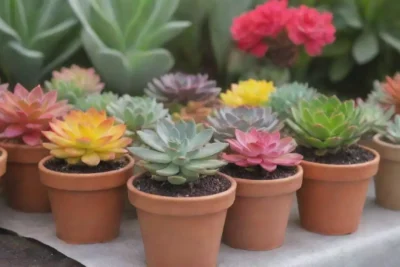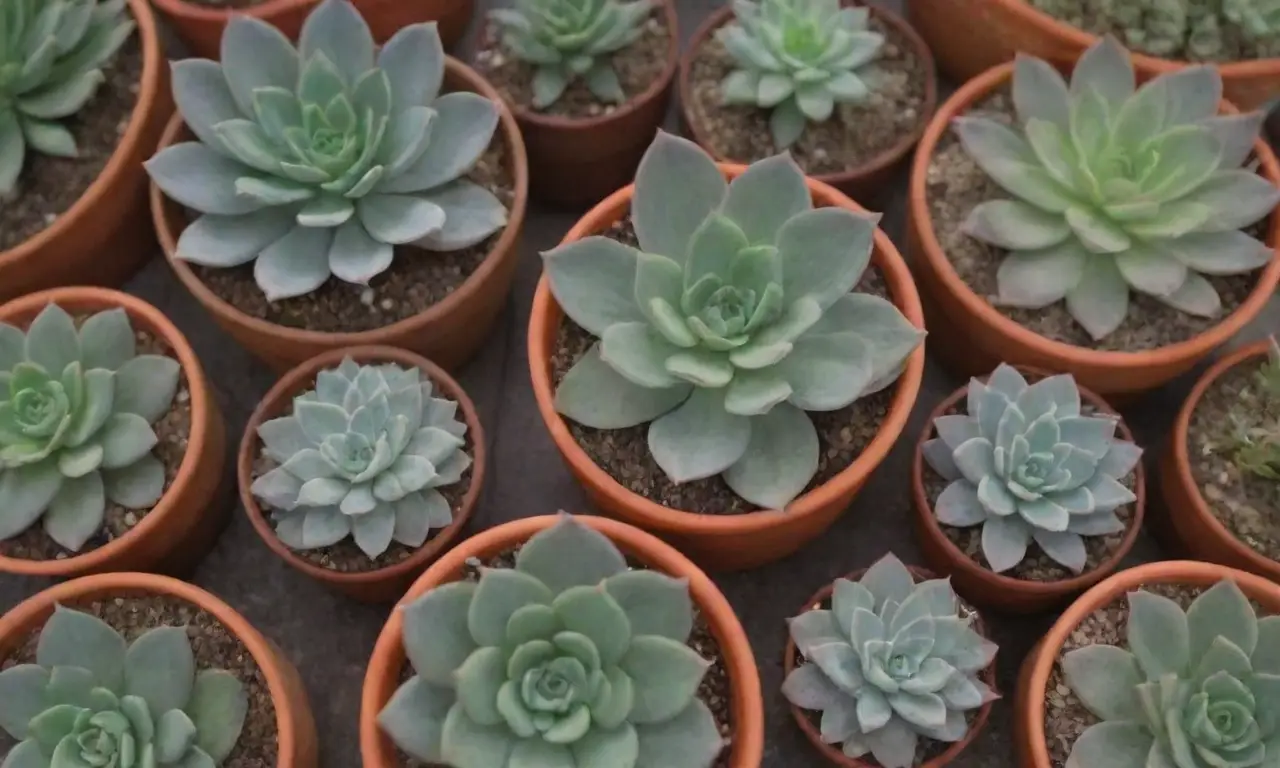
The Importance of Sustainable Practices in Succulent Swaps

Introduction
Sustainable practices are becoming increasingly critical in various areas of life, and gardening is no exception. Among the myriad of gardening trends, succulent swaps have gained traction, offering plant lovers an engaging way to share their love for these resilient and varied plants. Succulents, with their fascinating shapes and beauty, are often coveted, but it is essential to ensure that our practices around acquiring these plants do not negatively impact the environment or plant populations.
In this article, we aim to explore the significance of implementing sustainable practices during succulent swaps. We will delve into various aspects such as the ecological benefits, ethical considerations, and how to create an impactful swapping community. By understanding these elements, we hope to inspire fellow plant enthusiasts to prioritize sustainability and cultivate a greener community.
Understanding Succulent Swaps
Succulent swaps are informal gatherings where plant enthusiasts come together to exchange their spare or propagable plants with one another. This practice not only promotes the sharing of plants but also fosters community engagement among plant lovers. However, while succulent swaps can provide numerous benefits, they can also lead to potential consequences if not approached mindfully.
The Rising Trend of Succulent Swaps
The growing popularity of succulents has led to a surge in their cultivation, appreciation, and sharing. These fascinating plants, known for their ability to retain moisture, are easier to care for than many traditional houseplants, making them an attractive option for both novice and seasoned gardeners. As a result, succulent swaps have emerged as a fun and resourceful way to expand personal collections without having to purchase new plants.
Participating in succulent swaps offers various benefits. It can help foster community connections among gardening enthusiasts while enabling individuals to diversify their plant collections. Additionally, these swaps allow plant lovers to share knowledge and resources about succulent care, ensuring that participants grow more knowledgeable about their beloved plants.
The Risks of Unsustainable Practices
While the allure of succulent swapping is undeniable, it is crucial to recognize the potential pitfalls that could arise if sustainable practices are overlooked. One significant risk is overharvesting. If participants bring plants collected from the wild to swap, it may inadvertently lead to the decline of certain succulent populations. Many succulents in their natural environments are already facing threats due to habitat loss caused by urban development, climate change, and excessive collection.
Moreover, the proliferation of non-native species acquired through swaps can create ecological imbalances when introduced into local ecosystems. These non-native plants may compete with indigenous flora for resources and can lead to a decrease in biodiversity, which is detrimental for our environment.
 Creative Ideas for Organizing a Community Succulent Swap Party
Creative Ideas for Organizing a Community Succulent Swap PartyLastly, swapping practices that lack awareness regarding pests and diseases could harm the sharing community. Infected plants can easily spread pathogens to other participants' collections, leading to potential loss of plants and investments for others.
The Ecological Benefits of Sustainable Swapping
One of the key advantages of sustainable practices in succulent swaps is the environmental impact. By ensuring that we engage in responsible and ethical ways of sharing plants, we can foster a healthier ecosystem.
Promoting Local Biodiversity
Participating in sustainable succulent swaps encourages the use of native and non-invasive succulent species, which can bolster local biodiversity. Choosing to trade plants that naturally thrive in the region fosters a balance between cultivated gardens and wild landscapes. This practice can contribute to maintaining local habitats while directly benefiting native wildlife species that depend on indigenous plants.
By elevating awareness about plant selection and encouraging participants to source plants ethically, we can champion the importance of biodiversity within our swapping communities. This focus leads to healthier ecosystems and a sense of pride among members who can see their ecological contributions firsthand.
Lowering the Carbon Footprint
Engaging in succulent swaps also aids in reducing the overall carbon footprint of our plant collections. When individuals exchange plants locally, they diminish the need for transportation for plant procurement, which can significantly cut down on emissions. Instead of relying on commercial nurseries or online marketplaces, which often require shipping, succulent swaps allow enthusiasts to acquire new plants right in their community.
Encouraging participants to grow from cuttings and propagations further reinforces this principle. By sharing healthy cuttings rather than fully grown plants, individuals not only save resources but also increase their knowledge of propagation techniques, instilling deeper plant care skills in the community.
Fostering Community Engagement and Education
Sustainable succulent swaps also act as a platform for community engagement and education. By organizing swaps, participants can create a learning environment where people can share practices on plant care, propagation methods, and ethical sourcing.
 The Ultimate Guide to Hosting a Successful Succulent Swap Event
The Ultimate Guide to Hosting a Successful Succulent Swap EventWorkshops that coincide with swaps can provide insight into cultivating succulents sustainably and avoiding common pitfalls. This kind of education is invaluable in building awareness of the impact of practices on both the environment and plant populations. Not only do these swaps promote sharing, but they also promote sustainability through informed practices.
Best Practices for Sustainable Succulent Swaps

To make succulent swaps environmentally friendly and beneficial for the community, it is vital to adopt best practices at every stage of the process.
Ethical Sourcing of Plants
The most critical aspect of sustainable swapping is ethical sourcing. Participants should cultivate their plants from reputable nurseries, local growers, or propagate from their existing healthy succulent collections. Collecting plants from their natural habitats should be strictly avoided, as this will help deter the ongoing depletion of local ecosystems.
During swaps, participants can share their ethical sourcing stories and educate others on how to choose plants that promote sustainability. Initiating conversations about native species and encouraging a preference for these during swaps will also ensure that participants prioritize ecological health.
Implementing a "Clean Swap" Policy
Creating a "clean swap" policy requires participants to ensure their plants are pest-free and healthy before the event. Participants should inspect their plants, checking for signs of disease or infestation. Encouraging the use of sterile tools during propagation and handling will minimize the risk of spreading pests or pathogens.
Additionally, participants may swap pieces of information alongside their plants, such as care instructions, known growth habits, and any relevant pests to watch out for. This practice not only assists in the longevity of the plants but fosters a conscientious swapping culture.
 Step-by-Step Guide to Setting Up Your Own Succulent Swap
Step-by-Step Guide to Setting Up Your Own Succulent SwapOrganizing Community Swaps
Organizing community swaps fosters a culture of collaboration among plant enthusiasts. By creating a platform for these events, individuals can meet, share knowledge, and build relationships within the community. Establishing a set of guidelines for sustainability will keep participants focused on environmentally friendly practices.
Using social media platforms and community boards can increase awareness and engagement around these events. Including educational components like talks or workshops on sustainability in gardening will empower individuals with the knowledge needed to develop better practices at their swaps.
Conclusion
The importance of sustainable practices in succulent swaps cannot be overstated. As plant lovers and enthusiasts gather to share their passion for succulents, the way we approach these swaps has the potential to contribute positively or negatively to our environment.
With a focus on ethical sourcing, commitment to maintaining biodiversity, and promotion of community education, succulent swaps can thrive as a sustainable practice. By implementing responsible practices in our swapping activities, we can protect our environment and contribute to the health of our precious plant ecosystems.
Ultimately, adopting sustainable practices within succulent swaps not only benefits our beloved plants but also fosters a supportive community that values education, collaboration, and environmental consciousness. As we continue to engage with our local plant communities and expand our succulent collections, let us remember the impact our choices can have. Together, we can ensure that the joy of sharing plants not only aids in individual growth but also enriches our planet.
If you want to read more articles similar to The Importance of Sustainable Practices in Succulent Swaps, you can visit the Succulent swaps category.



You Must Read